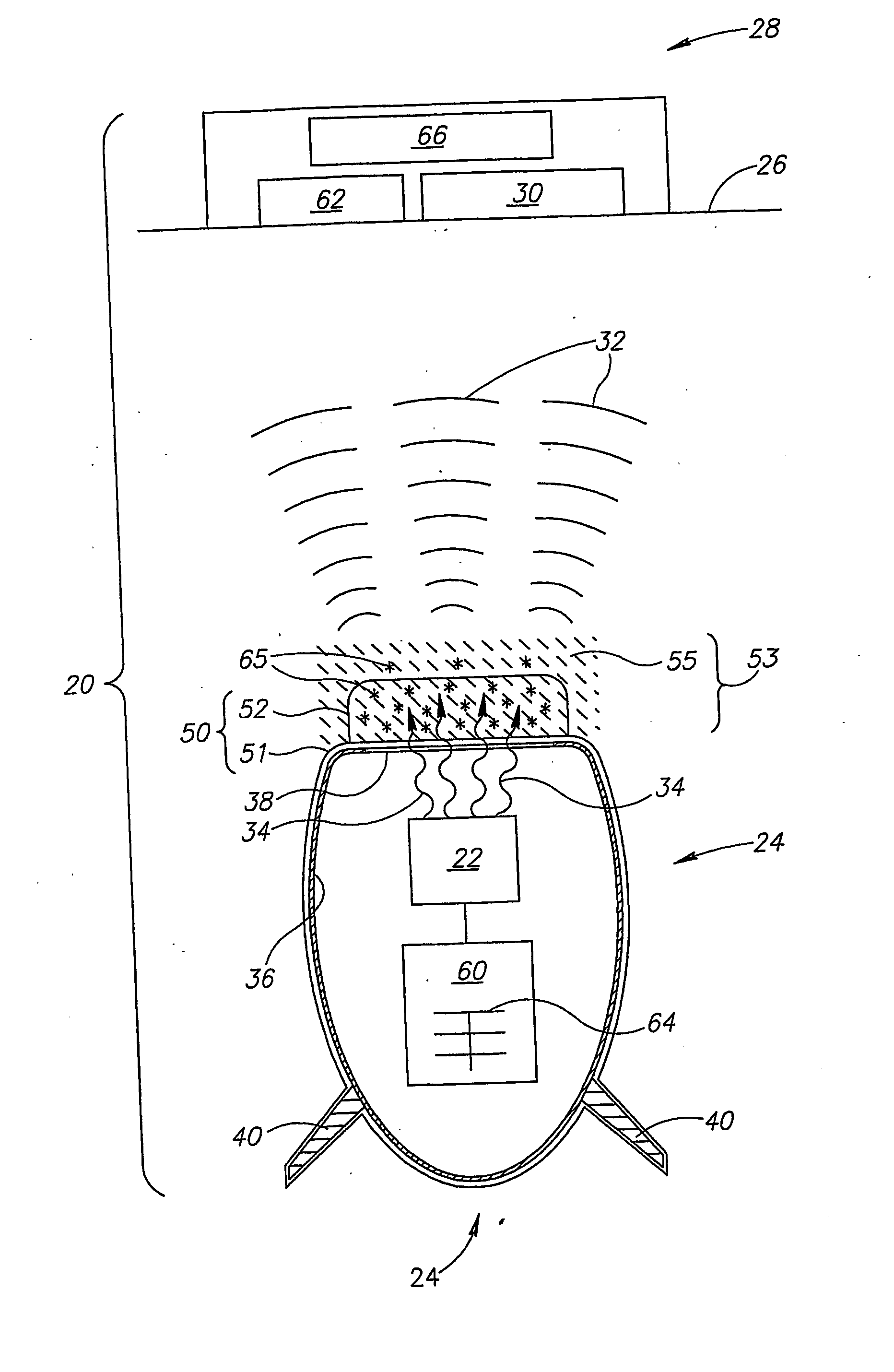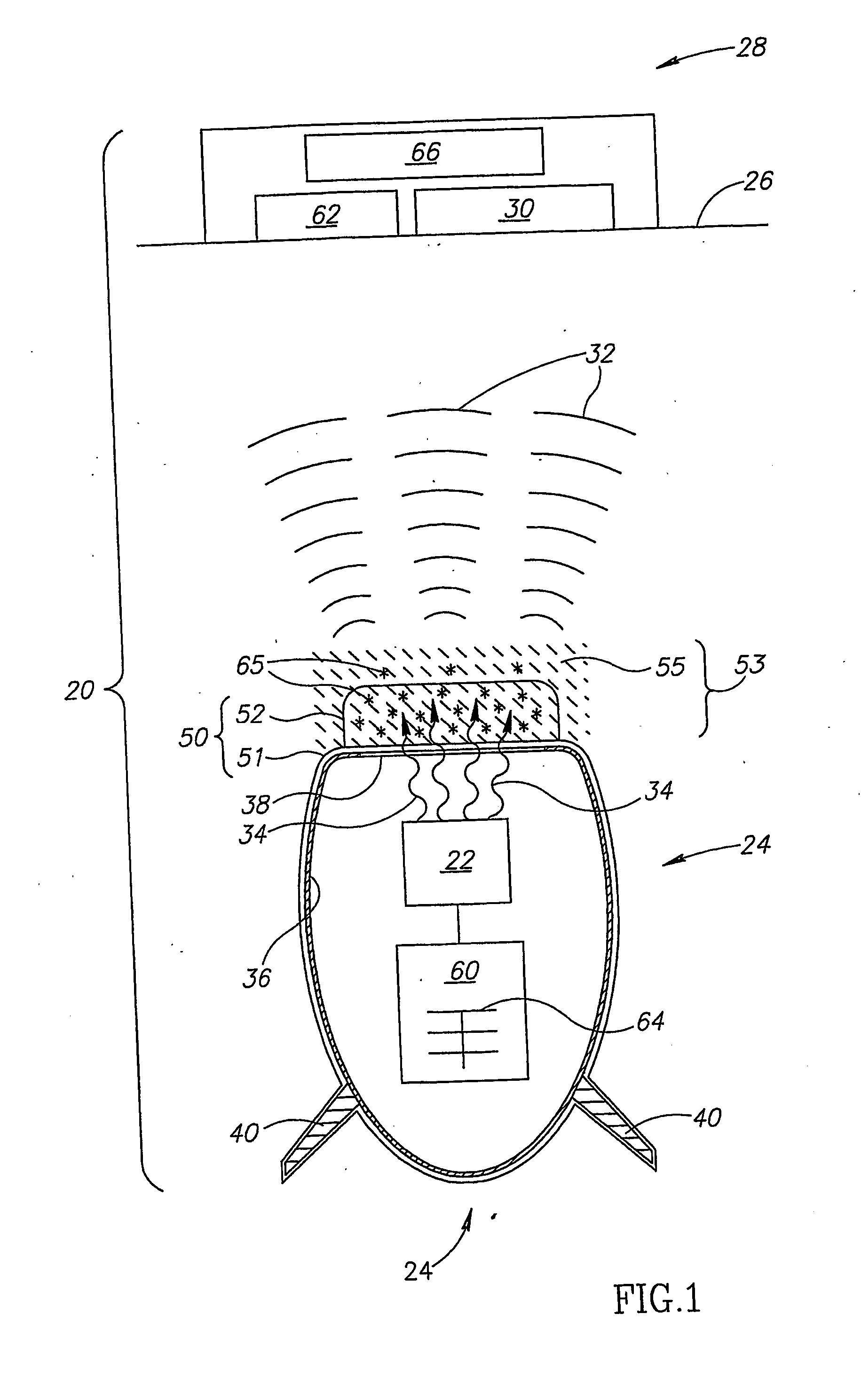Glucometer comprising an implantable light source
a light source and glucose assay technology, applied in the field of glucose assaying apparatus, can solve the problems of inconvenient and unpleasant finger pricking, prior art glucose assaying methods and devices, such as those based on finger pricking, and cannot provide substantially continuous so as to achieve long-term monitoring of a patient's glucose level
- Summary
- Abstract
- Description
- Claims
- Application Information
AI Technical Summary
Benefits of technology
Problems solved by technology
Method used
Image
Examples
Embodiment Construction
[0039]FIG. 1 schematically shows a glucometer 20, comprising a light source 22 encapsulated in a capsule 24, which is implanted below the skin 26 of a patient and a control unit 28 comprising at least one acoustic transducer 30, in accordance with an embodiment of the invention. Glucometer 20 is schematically shown determining the patient's glucose concentration responsive to photoacoustic waves, schematically represented by arcs 32, that are generated in the patient's body by light 34 from light source 22.
[0040] Capsule 24 comprises a casing 36 formed from a suitable material, such as a biocompatible metal or plastic, and has an optical aperture 38 through which light 34 may exit the casing. Capsule 24 is optionally oriented so that optical aperture 38 faces at least one transducer 30. Capsule 24 optionally comprises a plurality of anchor stubs 40 that aid in stabilizing the location and orientation of the capsule in the patient's body. A method of inserting capsule 24 below the p...
PUM
| Property | Measurement | Unit |
|---|---|---|
| wavelength | aaaaa | aaaaa |
| wavelength | aaaaa | aaaaa |
| wavelengths | aaaaa | aaaaa |
Abstract
Description
Claims
Application Information
 Login to View More
Login to View More - R&D
- Intellectual Property
- Life Sciences
- Materials
- Tech Scout
- Unparalleled Data Quality
- Higher Quality Content
- 60% Fewer Hallucinations
Browse by: Latest US Patents, China's latest patents, Technical Efficacy Thesaurus, Application Domain, Technology Topic, Popular Technical Reports.
© 2025 PatSnap. All rights reserved.Legal|Privacy policy|Modern Slavery Act Transparency Statement|Sitemap|About US| Contact US: help@patsnap.com



